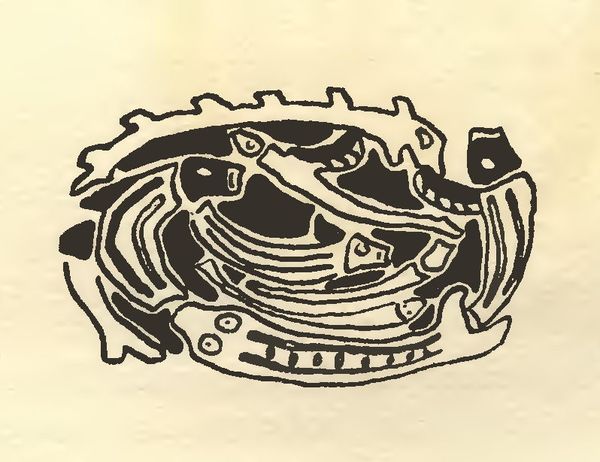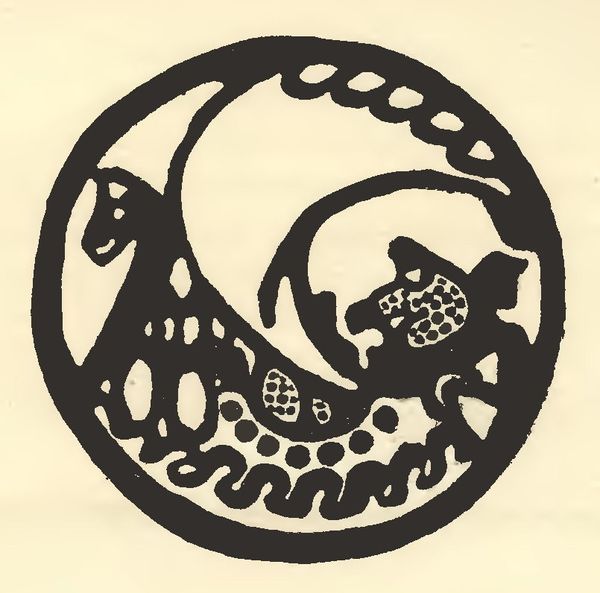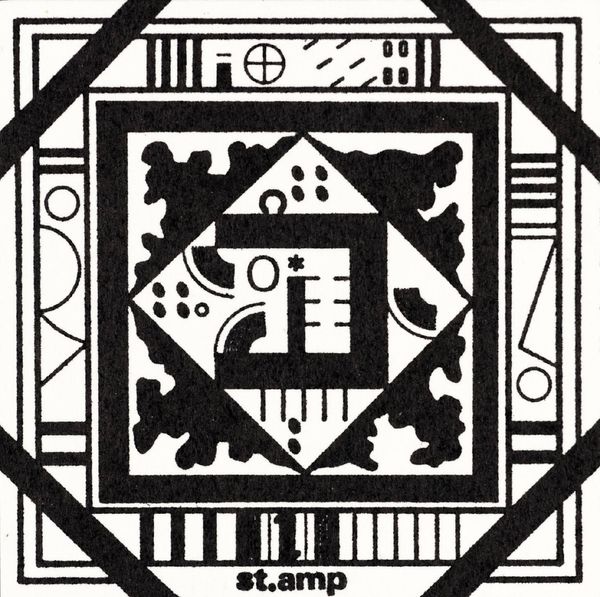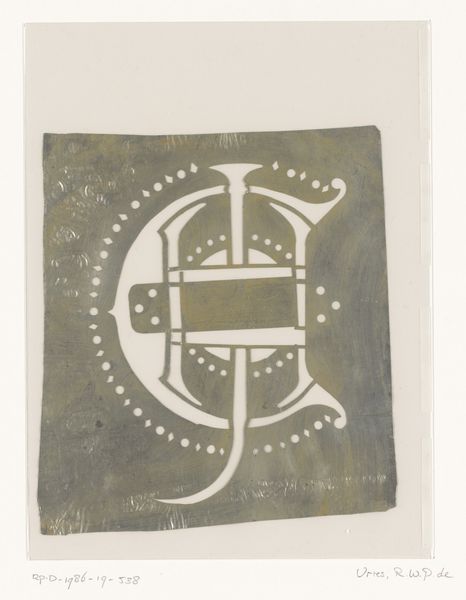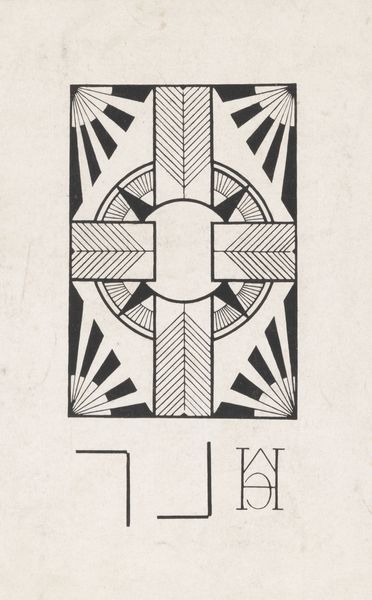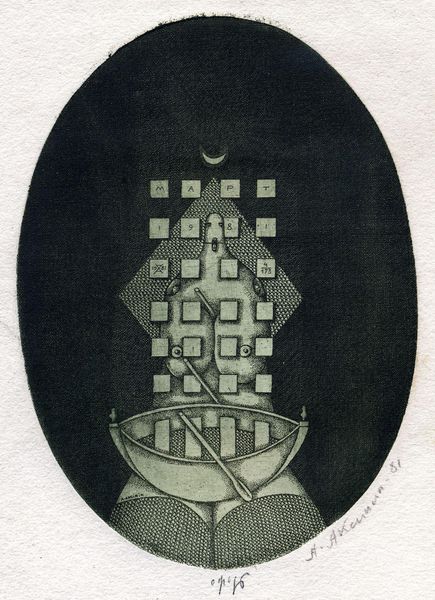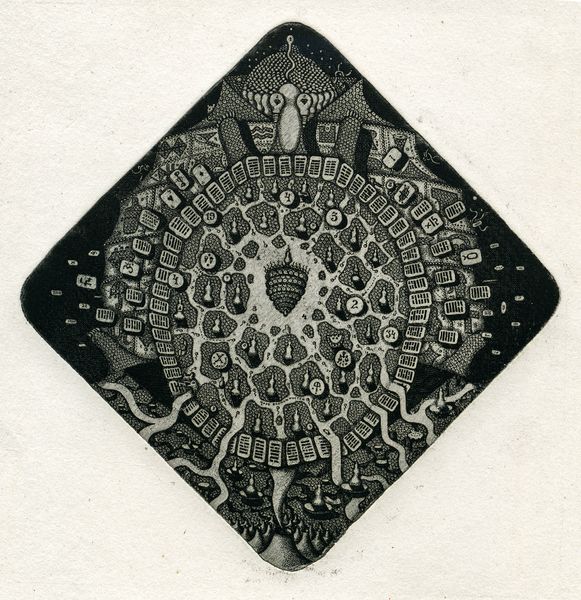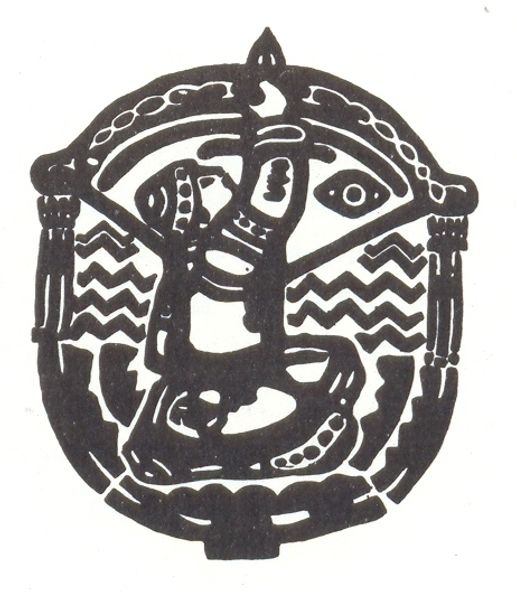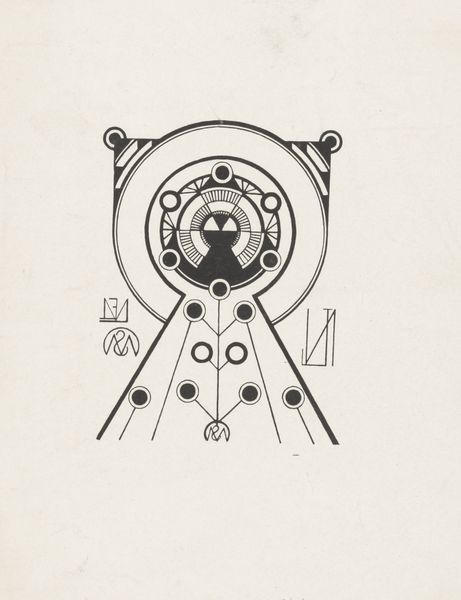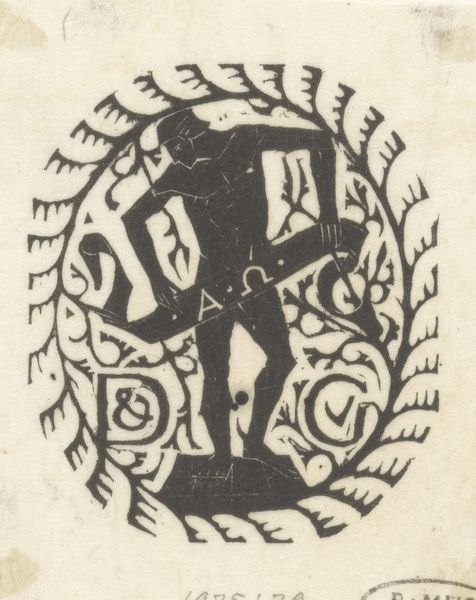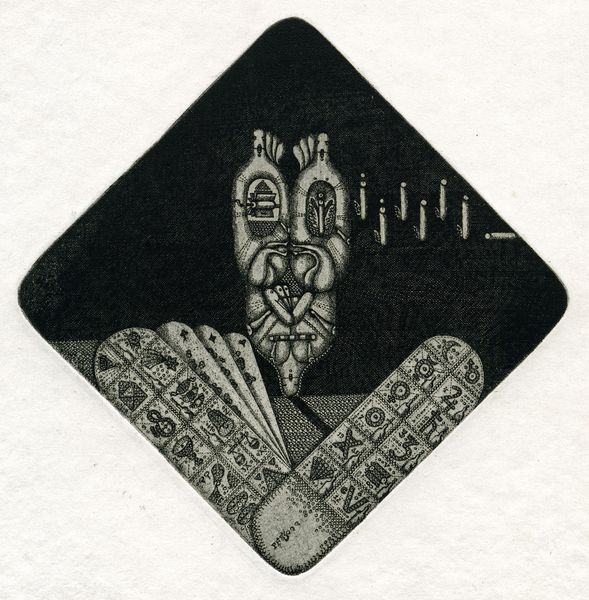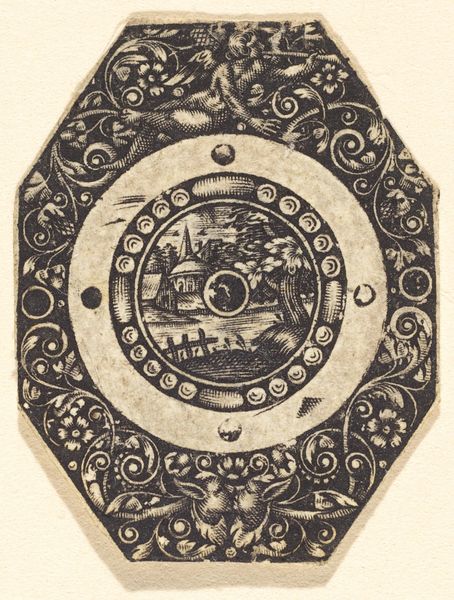
drawing, ink
#
drawing
#
ink line art
#
ink
#
geometric
#
pen-ink sketch
#
symbolism
Copyright: Public domain
Editor: Here we have Nicholas Roerich’s 1918 ink drawing, "Vignette for book 'N. K. Roerich'." It has such a bold, symbolic quality, like a crest or an emblem. How do you see its role as a statement, particularly considering its purpose within a book about the artist himself? Curator: It's crucial to consider the context of 1918 Russia, amidst revolution and immense social upheaval. Roerich, deeply interested in spirituality and theosophy, often used symbolism to communicate ideas about universal connection and inner peace, which resonated with intellectuals searching for stability during the political turmoil. Wouldn’t you agree it’s almost a defiant declaration of spiritual values? Editor: Absolutely. The stylized figures and geometric shapes remind me of ancient cultures. It seems very intentional. Is this an effort to connect with a larger human history beyond the immediate conflict of his time? Curator: Exactly! Roerich was greatly inspired by early Russian and Asian cultures, viewing them as sources of profound wisdom. In his vignettes, that link to what he understood to be universal spiritual ideas became central. Given his own book was essentially propaganda for the movement he led, do you feel that there might be less of this “inner peace” than initially interpreted, especially given the strong symbol on this artwork? Editor: I didn't think about that but maybe that explains the somewhat militant impression this work left me with. Curator: And do you agree it's interesting to consider how Roerich’s symbol-laden art was later embraced – and arguably, misinterpreted – within different political agendas? Editor: Very much so. Understanding that historical backdrop really changes my interpretation of Roerich's choice of subject and its public reception. Curator: Indeed, examining the artwork’s history gives us greater context and insight to these complex themes.
Comments
No comments
Be the first to comment and join the conversation on the ultimate creative platform.
